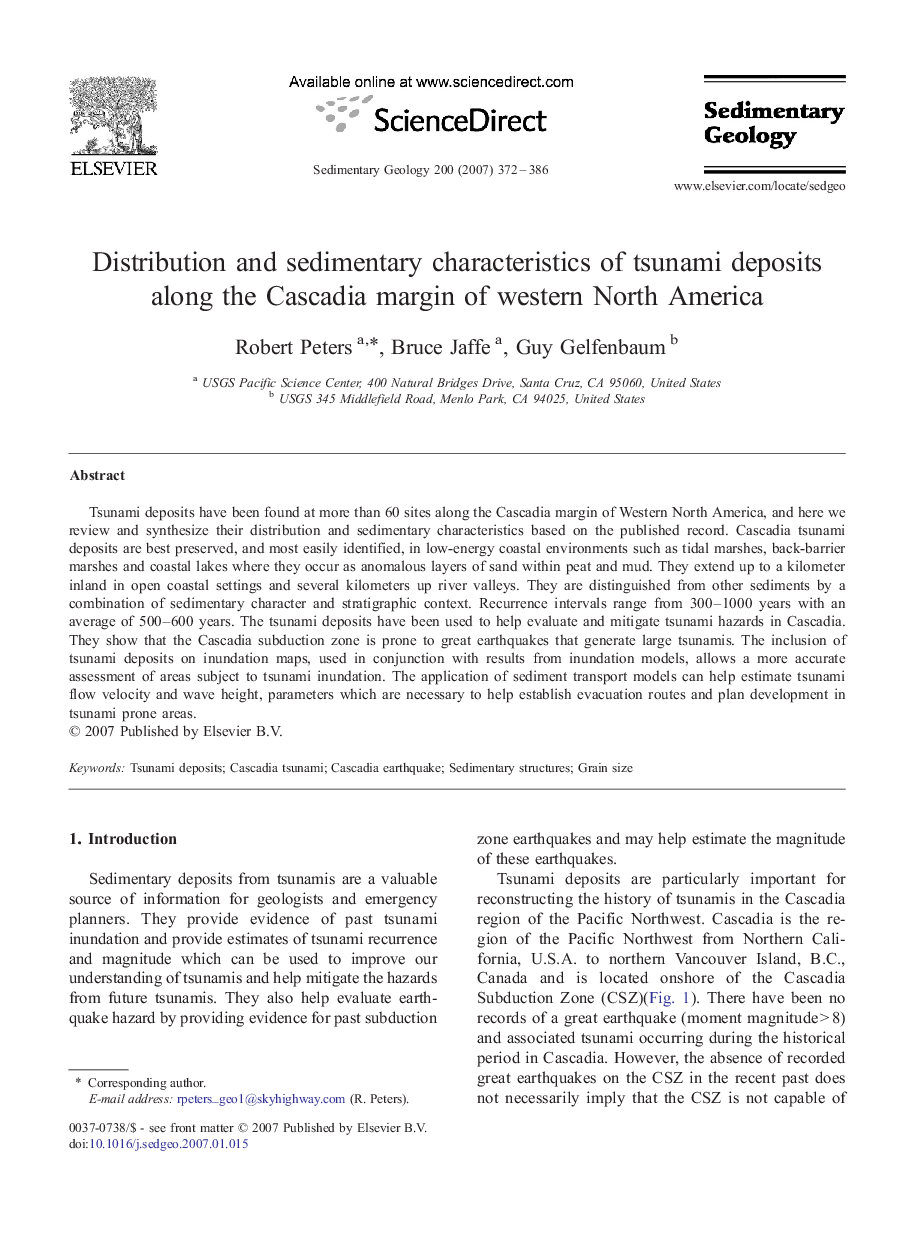| Article ID | Journal | Published Year | Pages | File Type |
|---|---|---|---|---|
| 4690727 | Sedimentary Geology | 2007 | 15 Pages |
Tsunami deposits have been found at more than 60 sites along the Cascadia margin of Western North America, and here we review and synthesize their distribution and sedimentary characteristics based on the published record. Cascadia tsunami deposits are best preserved, and most easily identified, in low-energy coastal environments such as tidal marshes, back-barrier marshes and coastal lakes where they occur as anomalous layers of sand within peat and mud. They extend up to a kilometer inland in open coastal settings and several kilometers up river valleys. They are distinguished from other sediments by a combination of sedimentary character and stratigraphic context. Recurrence intervals range from 300–1000 years with an average of 500–600 years. The tsunami deposits have been used to help evaluate and mitigate tsunami hazards in Cascadia. They show that the Cascadia subduction zone is prone to great earthquakes that generate large tsunamis. The inclusion of tsunami deposits on inundation maps, used in conjunction with results from inundation models, allows a more accurate assessment of areas subject to tsunami inundation. The application of sediment transport models can help estimate tsunami flow velocity and wave height, parameters which are necessary to help establish evacuation routes and plan development in tsunami prone areas.
